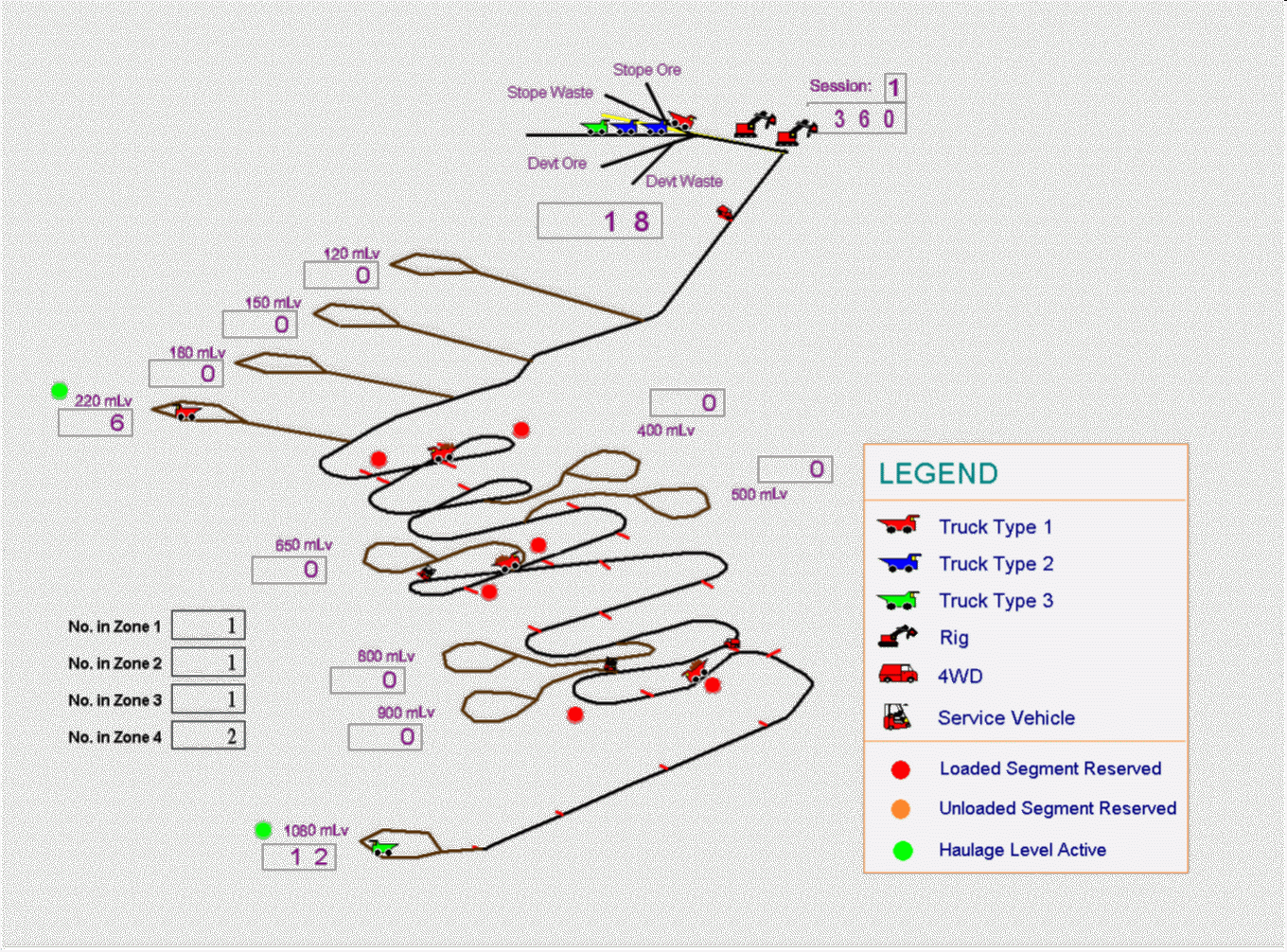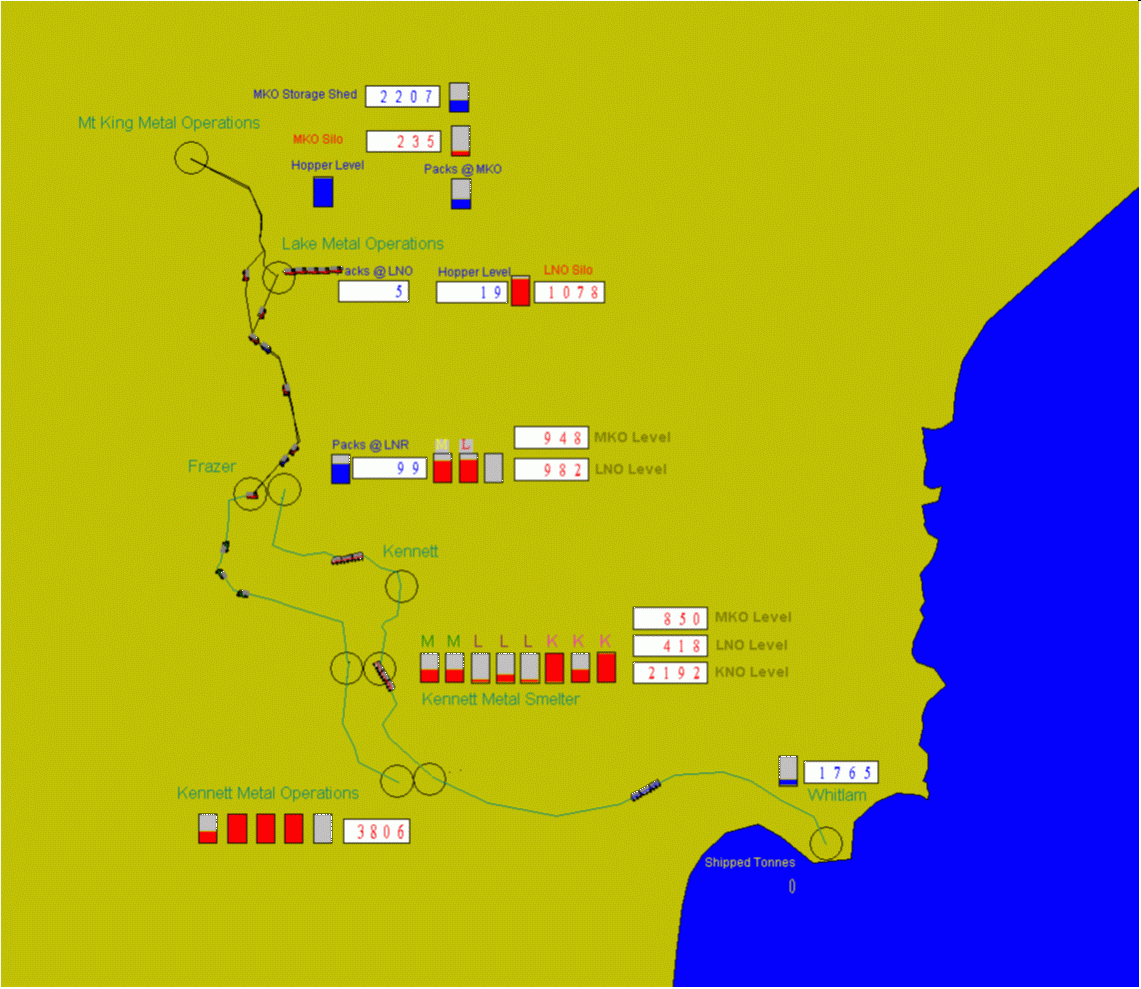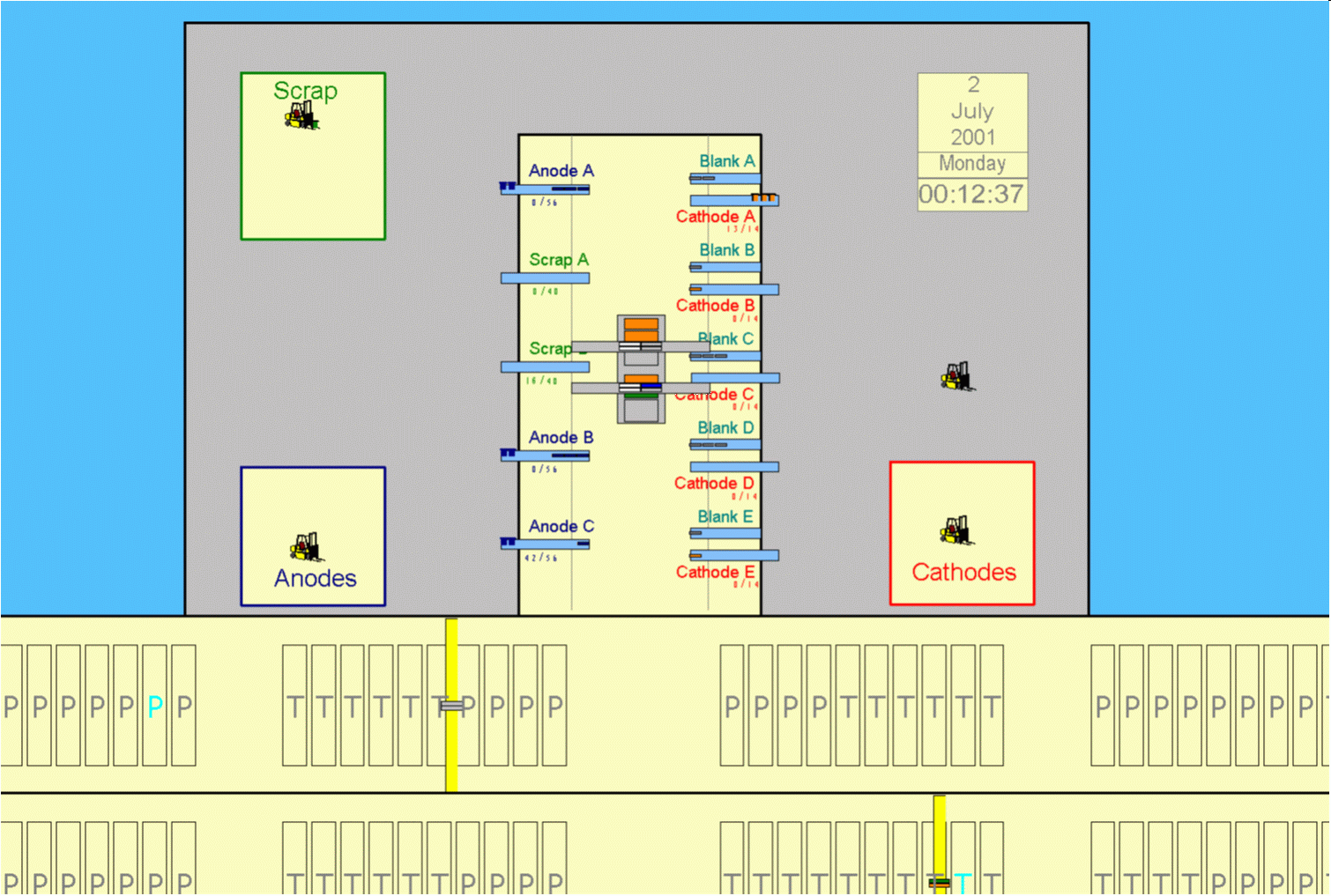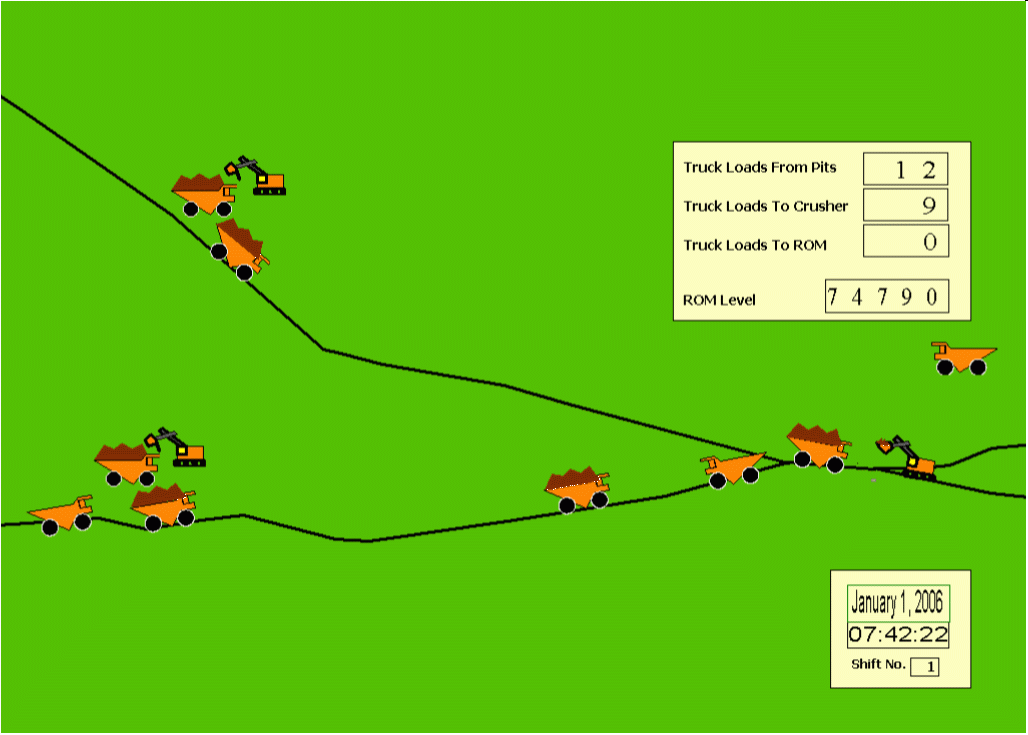SIMULATION MODELLING APPLICATIONS IN THE MINING INDUSTRY
Simulation Modelling has been successfully employed in the Mining Industry over the last 20 years. The number of application areas is extensive, with the following six key areas being the most common:
Open Pit Mines
(Trucking, Conveying, Loading, Dumping)
Simulation modelling can be applied when:
- Proposing a new mine
- Making changes to pit locations
- Upgrading excavator or loader units
- Increasing crushing circuit capacity.
Key benefits:
- Throughput capability can be accurately confirmed
- Truck cycle times can be determined
- Loading and dumping queue delay times can be ascertained
- Alternative mining schedules can be tested.
Crushing & Screening Plants

(Primary/Secondary/Tertiary Crushing Circuits)
Simulation modelling can be applied when:
- Investigating increased production options
- There is production uncertainty due to grade changes
- Adding new screens.
Key benefits:
- Potential throughput can be accurately confirmed
- Unit utilisation can be determined
- Recirculating & overflow tonnages can be established
- Tripper speed scenarios can be tested
- Surge bins can be sized.
Underground Mines

(Decline, Hoisting, Underground Rail)
Simulation modelling can be applied when:
- Designing a new underground mine
- Upgrading an existing underground mine
- There are changes in ore grade
- Mining plans need to be accelerated.
Key benefits:
- Throughput potential can be accurately confirmed
- Optimal fleet size can be determined
- Alternative mining schedules can be tested
- Passing point locations can be established.
Stockpiling

(Car Dumper, Product Piles, Blended Piles, Ports)
Simulation modelling can be applied when:
- A new stockpiling facility is to be introduced
- Expansion is required due to increased throughput
- There are changes to the pile layout
- There is a need to understand the impact of adding new products or blends.
Key benefits:
- Annual product throughput can be verified
- Utilisation levels can be determined
- The incident of conflicts can be reduced
- Required stacker/reclaimer capacity can be determined.
Transportation

(Road, Rail, Shipping)
Simulation modelling can be applied when:
- There are adjustments in Rail / Road / Shipping Capacity,
i.e. new timetable, shipping or trucking schedules - An increase in throughput is required
- There are changes to one or more facilities.
Key benefits:
- Potential product throughput can be accurately confirmed
- Optimal fleet sizes can be determined
- Inter-modal conflicts can be minimised
- Stockpiles can be sized.
Plants

(Refineries, Smelters, Beneficiation & Processing Plants)
Simulation modelling can be applied when:
- A new or expanded plant is proposed
- There are changes to the internal operating rules
- It is important to understand the impact of delays due to breakdown, maintenance and interactions
- There are upstream and downstream capacity changes.
Key benefits:
- Throughput potential can be accurately confirmed
- Component utilisations can be determined
- Alternative set-points and schedules can be tested.
Bulk Materials Handling

(Silos, Stockpiles, Loading, Unloading)
Simulation modelling can be applied when:
- A new or expanded operation is proposed
- Additional storage is required
- Additional products are considered
- Changes to the delivery frequency or mode are being considered.
Key benefits:
- Throughput capability can be accurately confirmed
- Storage sizes can be determined
- Alternative delivery patterns can be quantified.

